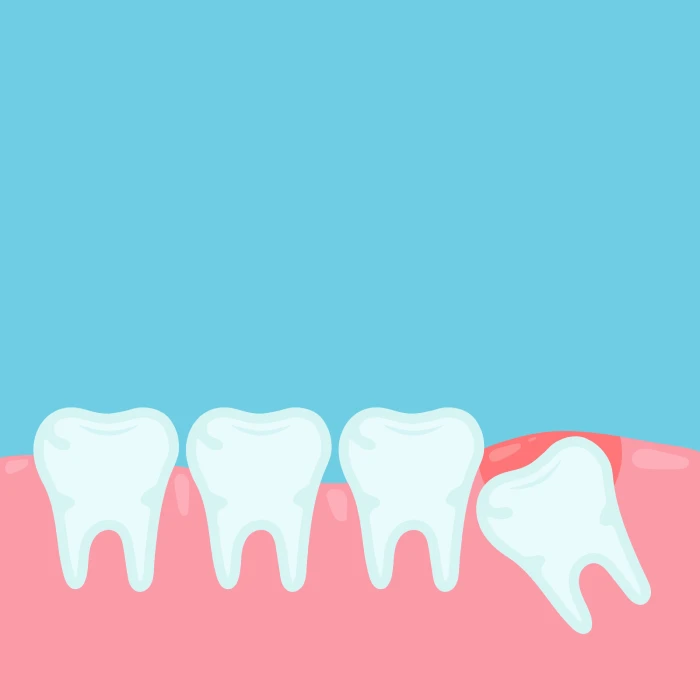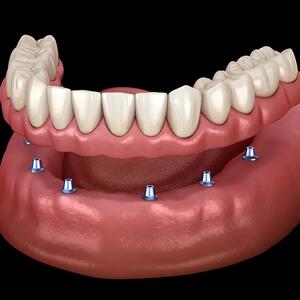Tooth Extraction
Facing the need for tooth extraction and filled with doubts? This article will shed light on all aspects of the procedure: from indications to postoperative care. Learn how to prepare for the extraction, what to expect during and after the procedure, and how to avoid complications. Your journey to painless and safe treatment starts here!
Indications extraction
- Severe dental damage with nerve exposure.
- Root fracture.
- Impacted teeth.
- Need for orthodontic adjustment.
- Large cysts or granulomas on the tooth.
- Periodontitis in teeth with a blocked root system.
- Severe tooth mobility in periodontitis.
- Abnormal root resorption.
Contraindications for extraction
Tooth extraction may be delayed only for relative reasons. In critical cases, extraction is performed even with contraindications (but only in a clinic setting).
Cases when extraction is postponed:
- First and third trimesters of pregnancy.
- Exacerbation of cardiovascular diseases.
- Menstrual period.
- Exacerbation of chronic illnesses.
- Uncontrolled diabetes.
- Taking medications affecting blood coagulation.
- Mental disorders in the active phase.
- Contraindications for anesthesia.
Is Immediate Tooth Removal Possible?
You will get a precise answer after a thorough diagnosis during your visit to the dentist. If the dentist finds any contraindications, they will suggest postponing the procedure and explain why it is necessary.
How Can You Prepare for a Tooth Removal?
- Avoid alcohol 2-3 days before the procedure.
- On the day of the procedure, avoid gym visits and heavy physical exercises.
- Have your last meal 2-3 hours before the procedure.
- 1-2 hours beforehand, a sedative may be taken (prescribed by a doctor), especially for those who are fearful.
Stages of Tooth Removal
The dentist evaluates the tooth's condition.
To assess the condition of the bone tissue and tooth roots.
Professional dental cleaning may be required before surgery.
The choice of painkiller considers various factors.
The tooth is gently extracted from the gum.
The socket is treated with an antiseptic, an anti-inflammatory agent is placed, and stitches are applied if necessary.
Is it Possible to Save a Diseased Tooth?
A doctor can only give an accurate prognosis after an examination. The chances of saving a tooth increase if:
- the dental roots are not damaged by cavities and are free from fractures or cracks;
- the tooth has not been painful before;
- the surrounding tissues are healthy.
- the dental crown is not completely destroyed;
- there are no restrictions to treatment;
- the tooth is not excessively loose;
Wisdom Teeth Removal

Removing a wisdom tooth is more complicated than removing regular teeth like incisors or molars. The wisdom tooth emerges in an already formed dental row, taking up the extreme position. This limits the dentist's access and visibility during the examination and surgery.
Before removing a wisdom tooth, an X-ray examination is usually performed. The X-ray helps to assess the condition of the tooth and its roots, which are usually curved. The X-ray can determine if the tooth is:
- impacted (partially or fully covered by gum tissue or bone, unable to emerge);
- dystopic (misaligned in relation to other teeth).
In both cases, removal is necessary. The duration of the surgery varies from 20 to 60 minutes (sometimes longer). To avoid serious health issues, it is recommended to visit a dentist at the first signs of pain.
Is Wisdom Tooth Removal Necessary Before Making a Dental prosthesis?
If the third molar interferes with the proper fitting of the dental prosthesis, we may suggest its removal to the patient. This helps to prevent irritation and minimize the risk of infection.
Tips After Tooth Extraction
Recommended Actions
- After surgery, apply an ice pack for 3-5 minutes with breaks of 5-10 minutes to reduce swelling.
- Continue regular oral hygiene, but avoid brushing the healing area.
- Use oral antiseptic rinses for the first 7 days, but avoid vigorous movements.
- Chew on the opposite side of your mouth.
What Not to Do
- No smoking or alcohol consumption for the first 3 days.
- Do not remove the cloth within 30 minutes after the operation.
- Do not touch the extraction site with your tongue.
- Refrain from physical exertion in the first two to three days.
- Do not apply a hot compress to the wound.
- Avoid forceful spitting and intense mouth rinsing.
- Avoid eating in the first 2-3 hours, and stay away from too hot or cold drinks.
- Avoid hot baths, visiting swimming pools, and saunas in the first week.
Complications After Dental Extraction: What to Do
Common complications:
- The absence of blood clotting in the socket leads to dryness and inflammation. Symptoms include pain and bad breath. A doctor's consultation and medication are necessary.
- Increased body temperature, inflammation, and gum swelling indicate alveolitis. This can be caused by not following postoperative instructions or a medical error. Treatment includes antibiotics.
- Nerve damage during complicated extraction, leading to prolonged numbness of the chin, lips, and cheeks. Medication (injections, vitamins) is required after consulting with a maxillofacial surgeon.
Following postoperative recommendations can help prevent most complications and aid in tissue recovery.
- Do not eat for 2-3 hours after dental extraction.
- Avoid the following for the next 3 days: visiting saunas and hot baths, heavy physical exercises, spicy, hard, or hot foods.
- Do not rinse the wound without a doctor's advice and the use of an antiseptic.
- Carefully brush your teeth, avoiding the injured areas.
If you experience pain or swelling after tooth extraction, immediately contact a doctor. Early treatment is usually simpler and more cost-effective.
Questions and Answers
Is it painful to extract a tooth?
Modern anesthesia methods make the procedure virtually painless.
Can I eat after a dental extraction?
It's recommended to refrain from eating for the first few hours after the procedure, and then to eat soft food, avoiding chewing on the side of the extracted tooth.
How long does it take for the socket to heal after extraction?
With normal tissue regeneration, the gum area around the operation fully heals within 7 days, and postoperative symptoms no longer cause concern.
Is it possible to replace a tooth immediately after its extraction?
In some cases, yes. If there are no contraindications and the extraction proceeded without complications, an immediate implantation protocol can be used. An artificial root is installed right after extraction and is loaded with a temporary crown. This is especially relevant for the smile zone.
What happens if a tooth is not extracted in time?
The mineralization and nutrition of the molar/incisor will cease. The process of decay will continue, resulting in infection first penetrating the root canals, then the periosteum. A cyst and abscess can form – dangerous pathologies that negatively affect the entire body. Delaying the decision to extract is not recommended.
Is it necessary to have an X-ray before dental extraction?
Yes, an X-ray is necessary to assess the condition of the tooth and surrounding tissues.
Is it possible to extract a tooth during pregnancy?
Yes, but not always. A consultation with a doctor is required. The best period for extraction is the second trimester when the periosteum is less sensitive and X-ray examinations are possible. In the first and late third trimesters, only emergency dental treatment is performed.


